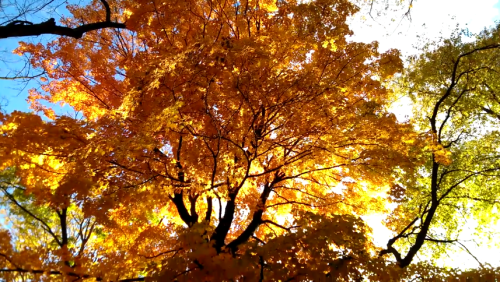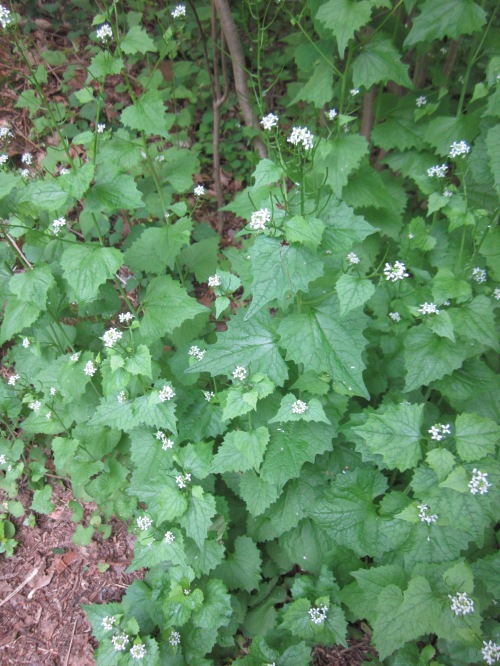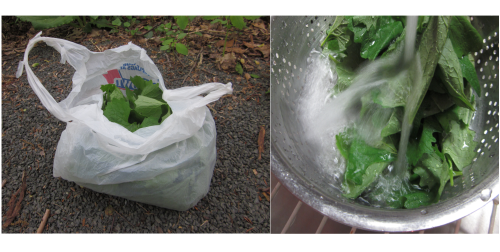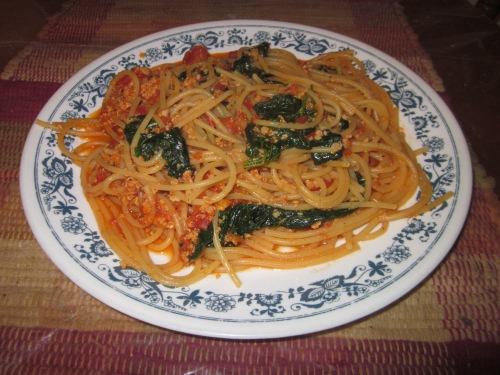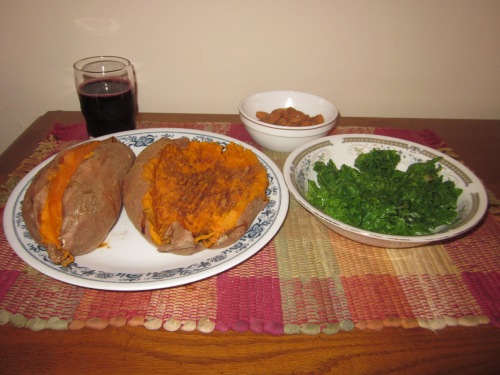 After a wonderful long walk along the river enjoying the fall foliage, I decided to make sweet potatoes for dinner, along with raw almonds, lightly steamed kale, and a glass of homemade vegan blueberry kefir.
After a wonderful long walk along the river enjoying the fall foliage, I decided to make sweet potatoes for dinner, along with raw almonds, lightly steamed kale, and a glass of homemade vegan blueberry kefir.
Sweet potatoes are packed with beta-carotene, which gives them their bright orange color. They are also a good source of various vitamins, and minerals, as well as fiber and starch. They contain only a little protein, and almost no fat. Almonds, on the other hand, contain a significant amount of protein, along with a lot of fat(mostly the healthy kind) as well as fiber.
Kale is a type of cabbage, and is loaded with powerful carotenoids like lutein and zeaxanthin, which are said to be good for the eyes. Kale is also a good source of fiber.
The vegan blueberry kefir has a lot of anthocyanins, which may be helpful for exercise recovery and may help prevent some diseases, and since it was fermented also has probiotic benefits. It was wonderfully effervescent, and a bit sour, a nice compliment to the sweet potatoes and almonds. It has a tincture of alcohol in it, making it sort of like the “red wine” of the meal.
It took about 45 minutes in the oven to bake the sweet potatoes. I added a dash of cinnamon to spice things up. They were very delicious, and all in all, a terrific vegan autumn meal. And very colorful too!
Pendant that I am, it must be noted that sweet potatoes are not related to potatoes. They are in completely different plant families. Sweet potatoes are related to morning glories, and potatoes are in the nightshade family, which means they are closely related to nightshades like tomatoes, eggplant, bell peppers and tobacco, yes, tobacco!
Besides this, sweet potatoes are often called yams, though they are not related to true yams. While they are both tubers, real yams are much bigger and starchier, and only taste a little like sweet potatoes. True yams only grow in the tropics or sub-tropics, and are originally from Africa. They tend to be sold in Caribbean or African markets.
For more information: Sweet Potato and Yam Differences
Other terrific vegan meal ideas:

